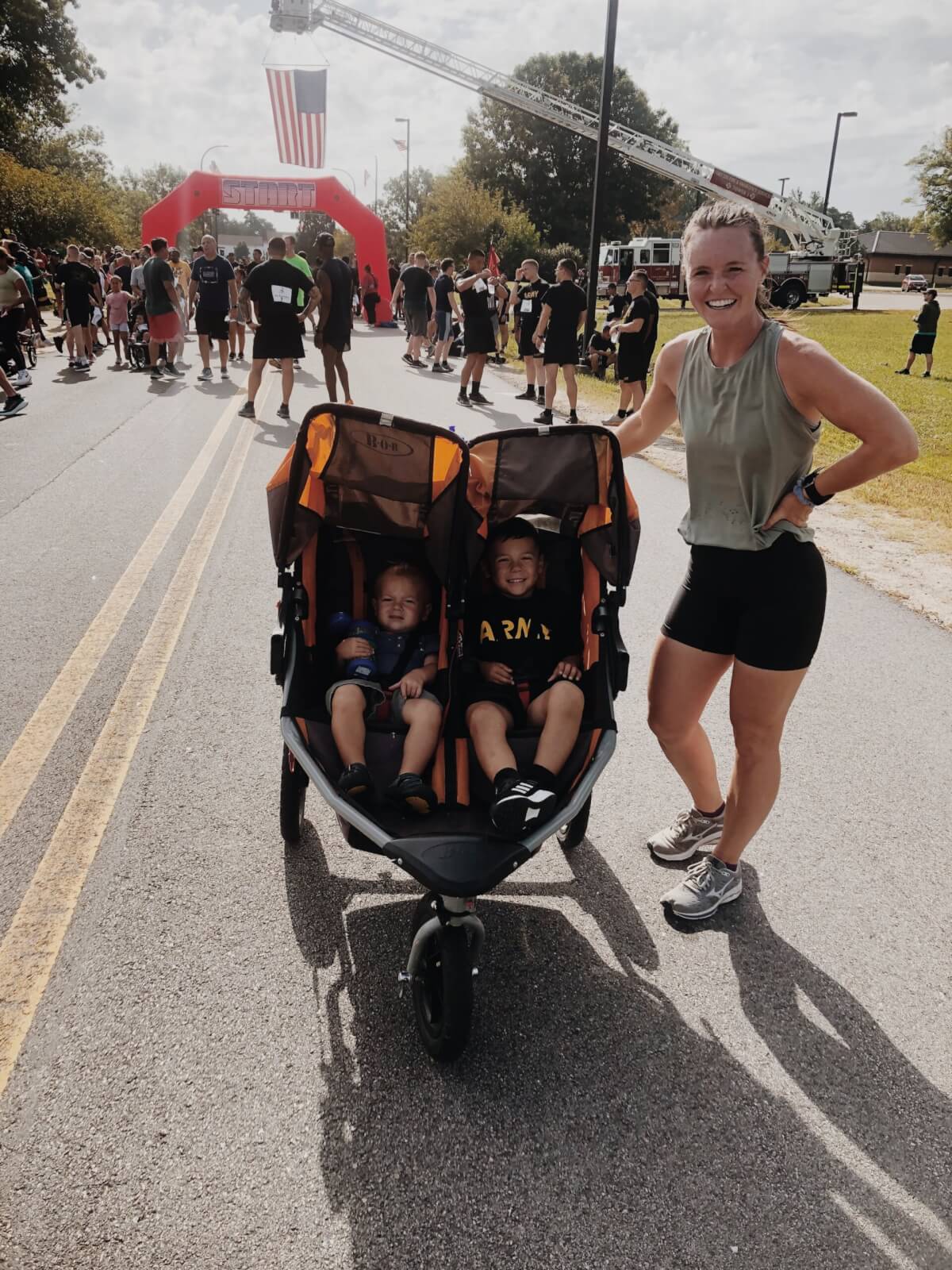At the end of summer, many fall marathoners are already deep into their training plans (hopefully!). The novelty of those first training runs are now routine while the reality of race day feels more real than it did at registration. With about two months out, it’s time to take stock and make necessary changes while building the mental stamina that will carry you across that finish line.
We asked Kimberly Valentine, founder and editor of Running Lifestyle, an online publication dedicated to all things running, along with Army spouse and Miles with Milsos Runclub founder Corrie Reeter, for their best advice on navigating the later stages of marathon prep.
1. Be consistent, not rigid
Valentine reminds runners to trust the process. “Take it week by week,” she says. “Don’t think about your 18-mile long run when your long run right now is 12. You’ll get there incrementally.”
At the same time, Reeter stresses that ignoring warning signs can derail your race. “If you start feeling injury-prone or exhausted all the time, something needs to change,” she says. That might mean a cutback week, adjusting your fueling, or simply giving yourself more rest. She’s a fan of the Believe Training Journal for keeping track of mileage, energy levels, and small aches and pains that can add up over time. “Sometimes you don’t notice patterns until you see them on paper,” she says.

2. Make recovery count
As mileage climbs, recovery matters more than ever. “Training is increasing in mileage and overall volume, so things like sleep and nutrition that you could maybe do half-heartedly before really start to matter,” says Reeter. “A long run underfueled or under-rested will not result in a quality workout. Trying for 7–8 hours of sleep, eating quality carbs, and practicing fueling on long runs will pay off.”
Strength training can help you stay healthy through peak mileage weeks. “Muscles are like shock absorbers,” Reeter goes on to explain. “When they’re weak, your body feels every impact.” Short, consistent strength sessions can keep you running strong.
3. Don’t experiment too close to race day
It’s easy to get caught up in the viral marketing tactics for new gear. But this close to race day, both runners say to stick with what’s already working.
“If you absolutely need new shoes this late in the season, stick to the same model and give yourself at least a couple of weeks to break them in,” Valentine advises.
The same goes for fuel. Use these last weeks to test gels, chews or other snacks on long runs. “Race day is not the time to try anything new,” Valentine warns.
4. Refine your race-day plan
August is the perfect time to start mapping out your goals and logistics. “I like to set three goals for race day,” Reeter says. “An A goal for when everything goes perfectly, a B goal that feels realistic and solid, and a C goal— something you can still celebrate if race-day challenges pop up.”
If you’re traveling for your race, Valentine suggests planning meals and packing your go-to nutrition ahead of time to avoid last-minute stress. “Be a little selfish with your time in the days before the race,” she says. “Prioritize sleep and rest.”
5. Strengthen your mental game
Long runs in late summer heat can feel endless but having some go-to mantras can keep your head in the game. “Something like ‘Strong legs, strong mind’ helps me stay present,” Reeter recommends. “I also remind myself why I started training in the first place. Sometimes I’ll even write it down and stick it somewhere I’ll see it every day — because when training feels like a grind, you need that reminder to keep showing up.”
As race day approaches, focus on small tweaks, consistent recovery, and building confidence in yourself and your plan. Like Valentine says, “This journey shouldn’t be miserable — we’re lucky to get to do it. Find the joy wherever you can.”












































